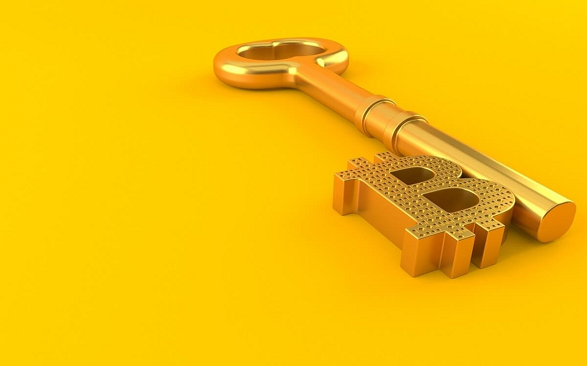In recent years, we’ve seen several high-profile hacks and scandals involving crypto exchanges. These events have left many investors feeling uneasy about the safety of their cryptoassets. Centralized exchanges seem to be more vulnerable to hacking and other cross-chain bridges, putting users’ funds at risk. This is where the self-custody of cryptoassets comes in.
In this article, we dive into what self-custody of cryptoasset is and how you can achieve it. We’ll cover the different types of wallets, best practices for self-custody, and the risks involved. By the end of this article, you’ll have a clear understanding of what it means to be a self-custodian of your cryptoassets and the steps you need to take to achieve it.
If you’re new to the world of crypto, self-custody of cryptoassets may seem intimidating. But, with the right knowledge and tools, anyone can take control of his or her cryptoassets and keep them safe. So whether you’re a seasoned investor or just getting started, we encourage you to read on and learn how to be a self-custodian of your cryptoassets.
Related: FTX Collapse: Does FTT have a future?
What is Self-custody?
Self-custody means having full control of your cryptoasset or digital assets, storing them in a wallet only you can access, and being responsible for their security.
Self-custody of cryptoasset is different from custodial services which are offered by centralized exchanges, online wallets, and other third-party services. Custodial services store your assets on your behalf, and you usually do not have control over your private keys. Instead, you rely on the service provider to secure your assets and protect them from security threats.
Self-custody is important in a world where centralized services are being targeted by hackers. It gives you control over your funds, offers more privacy, and allows you to take benefit from decentralized finance (DeFi) projects. It also ensures that you are not at the mercy of service providers who could potentially freeze your funds, legally or illegally.
Different types of wallets can be used for the self-custody of crypto assets, including hardware wallets, software wallets, and paper wallets. Hardware wallets are considered the most secure as they are physical devices that store your private keys offline. Software wallets, on the other hand, are digital and can be accessed through a computer or mobile device. Paper wallets involve printing out your private key and storing it offline in a safe location.
Read also: The Five Biggest Crypto Hacks in History
How to Achieve Self-custody of Cryptoassets
Here is a step-by-step process to help you set up your own self-custody wallet and secure your digital assets:
Step 1: Choose a wallet.
To set up your self-custody wallet, you need to choose the wallet type that suits you. As mentioned above, there are different kinds of wallets, including hardware, software, and paper wallets. Hardware wallets are the safest but software wallets are more convenient. Paper wallets are not recommended for long-term storage. Hardware wallets such as Ledger Nano and Trezor are popular choices due to their high-level security features.
Step 2: Set up your wallet.
Once you choose your wallet, the next step is to set it up. Each wallet has its own unique setup process but they usually require downloading the app or software and creating a new wallet. You’ll be issued a unique passphrase or seed phrase. A passphrase or seed phrase is a set of 12 or 24 words to recover your wallet in the event you lose access. It’s important to keep your seed phrase safe and not share it with anyone.
Having set up your wallet, you can now send and receive cryptoassets into your wallet. To receive cryptoassets, you need to provide your wallet address. Your wallet address is a unique string of letters and numbers. To send cryptoassets, you’ll need the recipient’s wallet address and the amount you want to send. Check the address and amount before sending as transactions can’t be undone or reversed. When confirmed, you can then complete the transaction.
Step 3: Secure your wallet.
It’s important to protect your wallet from unauthorized access. Using a strong password and enabling two-factor authentication can help you do this. Ensure that you always keep your passphrase or seed phrase safe and don’t share it with anyone.
Related: How do I secure my crypto wallet with two-factor authentication (2FA)?
Public Wi-Fi networks are not secure. This is because they can be easily hacked, making it easy for attackers to access your wallet. Therefore, it is crucial to avoid using public Wi-Fi when accessing your wallet.
Using multiple signers or multisig wallets is another best practice for self-custody that offers an additional layer of security. Multisig wallet involves using multiple keys, with each key held by a different person to authorize transactions. It is most suitable when two or more persons have interest in the cryptoasset. With multiple keys, no one person has complete control over the cryptoassets.
Step 4: Backup your wallet.
You should always back up your wallet in case of hardware failure or loss of access. Most wallets allow you to back up using your passphrase or seed phrase. Again, keep your backup safe, and don’t share it with anyone.
Step 5: Keep your wallet up to date.
Make sure to keep your wallet software or app updated with the latest security features and bug fixes. Regularly check for updates and security advisories from the wallet provider to keep your cryptoassets or digital assets secure.
Conclusion
In the world of crypto, self-custody is critical. Recent hack issues with centralized exchanges, bridges, and decentralized exchanges have made it even more crucial to take complete control of your cryptoassets and be responsible for keeping them secure.
This article covered everything you need to know about self-custody of cryptoassets. By using the right tools and following the steps outlined above, anyone can become a self-custodian and ensure their cryptoassets are safe.
Read also: Proof of Reserves (PoR) Explained
Image credit: Source: AdobeStock / Talaj
Credit: Ndianabasi Tom A crypto journalist and content writer who has been talking about cryptocurrency and blockchain technology since 2018, Ndianabasi is a Writer at Crypto Asset Buyer (CAB).




